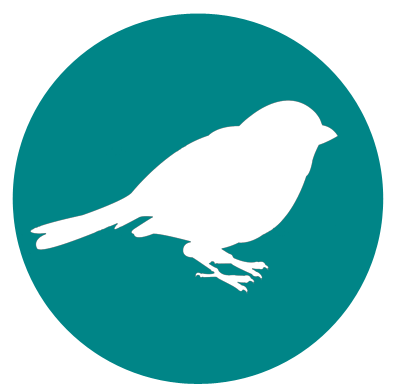Birding at Maumee River Rapids
Maumee, OhioGeneral Information
Address
Maumee, Ohio
County/Counties
Lucas, Wood
DeLorme Page Number and Coordinates
(7th Edition and earlier) p. 26 D3; p. 36 A2
Nearest Town or City
Access points are spread along the Maumee River roughly 5 miles downstream and 12 miles upstream from Waterville.
Directions from Nearest Town or City
Directions to best access points:
1. From the junction of I-475 and U.S. Rt. 24, proceed southwest to the Jerome/Stitt Rd. exit. Cross over the overpass and follow the curved road to the left for 0.3 miles to Jerome Road. Turn right (south) and pass down the hill to the river. Vantage points are from here downstream past the I-475 bridge.
2. From Waterville, take U.S. Rt. 24 southwest about 1.0 miles to Farnsworth Metropark, Roche de Bouef parking area. Survey the rapids at this point downstream past the old bridge. There are restrooms here.
3. From Waterville, take State Rt. 64 east across the bridge and turn right (south) after you cross the bridge onto Rts. 64/65 combined. Rt. 65 branches to the right after 0.5 mile. At the bottom of the first hill, check the Miltonville access area.
4. Weir’s Rapids is accessed from Rt. 65 about 4.5 mile southwest of the Waterville (Rt. 64) bridge. Turn on Rangeline Road.
5. Otsego Rapids is accessed from Rt. 65 at its junction with Rt. 235 about 6.0 miles southwest of the Waterville bridge. Park at the Otsego Park shelter house and view the rapids from the river side of the shelter house.
6. VanTassel access is located 8.6 miles from the Waterville bridge.
7. The rapids at Grand Rapids are easily viewed from just upstream from the railroad bridge or, from the Rt. 24 side of the river, at Providence dam. Access to the dam is about 0.3 mile southwest of the Grand Rapids (Rt. 578) bridge.
8. Otsego Road (unmarked) is an obscure gravel road along Rt. 24 about 5.0 miles SW of Waterville. It is just northeast of the junction of Box Road. Turn south toward the river and the road soon ends at the river.
About Maumee River Rapids
The rapids of the Maumee River stretch from Grand Rapids to Maumee, a distance of some 15 miles. There are several low water areas in this stretch of river punctuated by deep water zones. Riparian forest also borders the river on both sides. Access points are many (listed above), but perhaps the most popular sites are the Jerome Road rapids (Area #1) and the Farnsworth Park rapids (Area #2). The area is bordered by Rt. 24 on the north and Rt. 65 on the south. The Towpath Trail on the north side of the river links Farnsworth Park in the NE to Providence Park in the SW. This 8 mile level trail traverses excellent riparian forest and offers frequent views of the river.
NOTE: River levels are obviously at the mercy of local rainfall. Generally speaking, the rapids are productive for birds from July through January, but conditions can change rapidly with the onset of heavy rains and good habitat for waders or gulls can be wiped out in a matter of hours.
Visiting Information
Closed hours/season
The Metroparks areas within the river rapids corridor are open from dawn to dusk every day.
Parking Areas
All access areas mentioned have parking lots with the exception of the Otsego Road site. =
Fees/Permits
None.
Restroom Facilities
Restrooms are located at Side Cut Metropark at the NE end of the rapids, at Farnsworth Metropark, at Bendview Park along the Towpath Trail, and at Providence Metropark at the SW end of the rapids.
Special Note
The river is popular with duck/goose hunters in the fall and early winter. River ice is often unpredictable, be careful.
Harmful Insects, Poisonous Plants, or Animals
Poison Ivy is abundant along the Towpath Trail.
Restaurants in the Area
There are several restaurants both in Waterville and in Grand Rapids.
Other Useful Information
The Grand Rapids-Waterville Christmas Bird Count covers all of the Maumee River rapids area mentioned in this article.
Other Birding Spots in the Area
Oak Openings Metropark and the Maumee State Forest are about 6 miles west of Waterville along Rt. 64.
Birds of Interest by Season

Winter
Over the past dozen years or so, the river rapids have proven to be a reliable location for unusual winter gulls. Numbers of gulls will build on the river as Lake Erie begins to ice up, leaving the rapids as one of the few areas of open water in NW Ohio. A die off of Gizzard Shad also entices large numbers of gulls to the river rapids. Among the throngs of Herring and Ring-billed Gulls are usually a few Glaucous, Iceland, and Lesser-black-backed Gulls. Rarer still is Thayer’s Gull, with just a few records, and Mew Gull, with just a single occurrence. Small numbers of ducks visit the rapids in winter as well; many remember the Harlequin Duck that wintered at Grand Rapids in 2001.
Spring
River water levels are usually too high in spring to attract any concentration of water birds so efforts in spring turn to songbirds. There are no particular specialties to seek here, but numbers of birds can often be good as the migrants appear to use the wooded riverbanks as a corridor.
Summer
Beginning in July, and depending on water levels, the southbound shorebird migration can be quite good on the rapids. Up to a dozen species may be found in a day and a season’s worth of scrutiny of the low water will turn up between twenty and thirty species. Unusual sightings include American Avocet, Whimbrel, Marbled Godwit, Ruff, and Wilson’s Phalarope. Lesser Yellowlegs dominate the early migration, American Golden-plovers often make an October appearance, and the shorebird migration tails off with (as elsewhere) Dunlin in November. Cliff Swallows nest under the old bridge at Farnsworth Metropark, Osprey are regularly seen here, Franklin’s Gulls may appear any time from July to November, and American White Pelicans are rare visitors.
Fall
Beginning in July, and depending on water levels, the southbound shorebird migration can be quite good on the rapids. Up to a dozen species may be found in a day and a season’s worth of scrutiny of the low water will turn up between twenty and thirty species. Unusual sightings include American Avocet, Whimbrel, Marbled Godwit, Ruff, and Wilson’s Phalarope. Lesser Yellowlegs dominate the early migration, American Golden-plovers often make an October appearance, and the shorebird migration tails off with (as elsewhere) Dunlin in November. Cliff Swallows nest under the old bridge at Farnsworth Metropark, Osprey are regularly seen here, Franklin’s Gulls may appear any time from July to November, and American White Pelicans are rare visitors.

